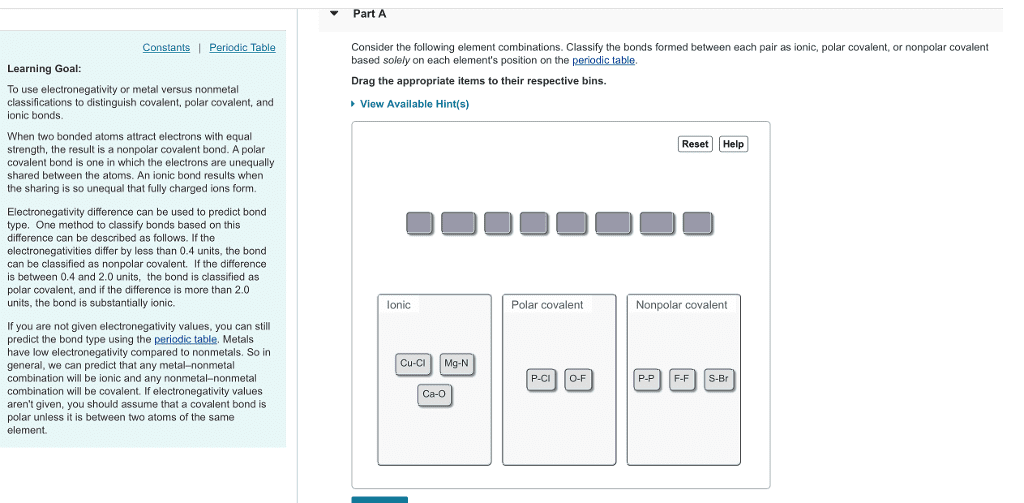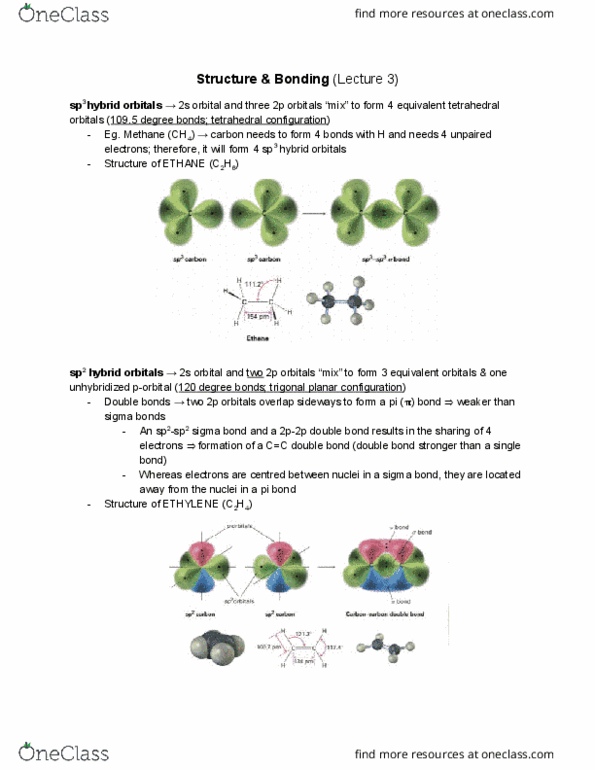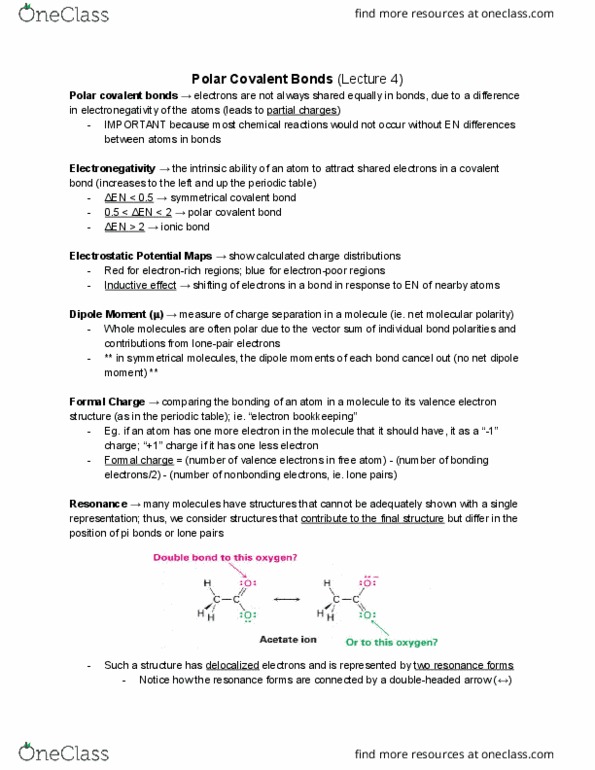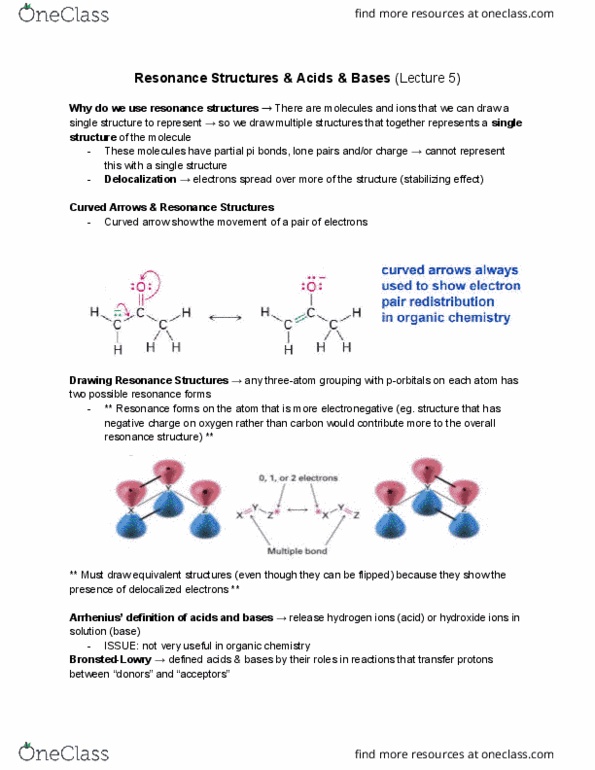
Part A Constants | Periodic Table Learning Goal: To use electronegativity or metal versus nonmetal classifications to distinguish covalent, polar covalent, and ionic bonds. Consider the following element combinations. Classify the bonds formed between each pair as ionic, polar covalent, or nonpolar covalent based solely on each element's position on the periodic table. Drag the appropriate items to their respective bins. » Viow Available Hint(s) Reset Help When two bonded atoms attract electrons with equal strength, the result is a nonpolar covalent bond. A polar covalent bond is one in which the electrons are unequally shared between the atoms. An ionic bond results when the sharing is so unequal that fully charged ions form. OOOOOOOO Electronegativity difference can be used to predict bond type. One method to classify bonds based on this difference can be described as follows. If the electronegativities differ by less than 0.4 units, the bond can be classified as nonpolar covalent. If the difference is between 0.4 and 2.0 units, the bond is classified as polar covalent, and if the difference is more than 2.0 units, the bond is substantially ionic. Ionic Polar covalent Nonpolar covalent If you are not given electronegativity values, you can still predict the bond type using the periodic table. Metals have low electronegativity compared to nonmetals. So in general, we can predict that any metal-nonmetal combination will be ionic and any nonmetal-nonmetal combination will be covalent. If electronegativity values aren't given, you should assume that a covalent bond is polar unless it is between two atoms of the same element. Cuca Mg-N Ca-0 pa # PP FE s.81






